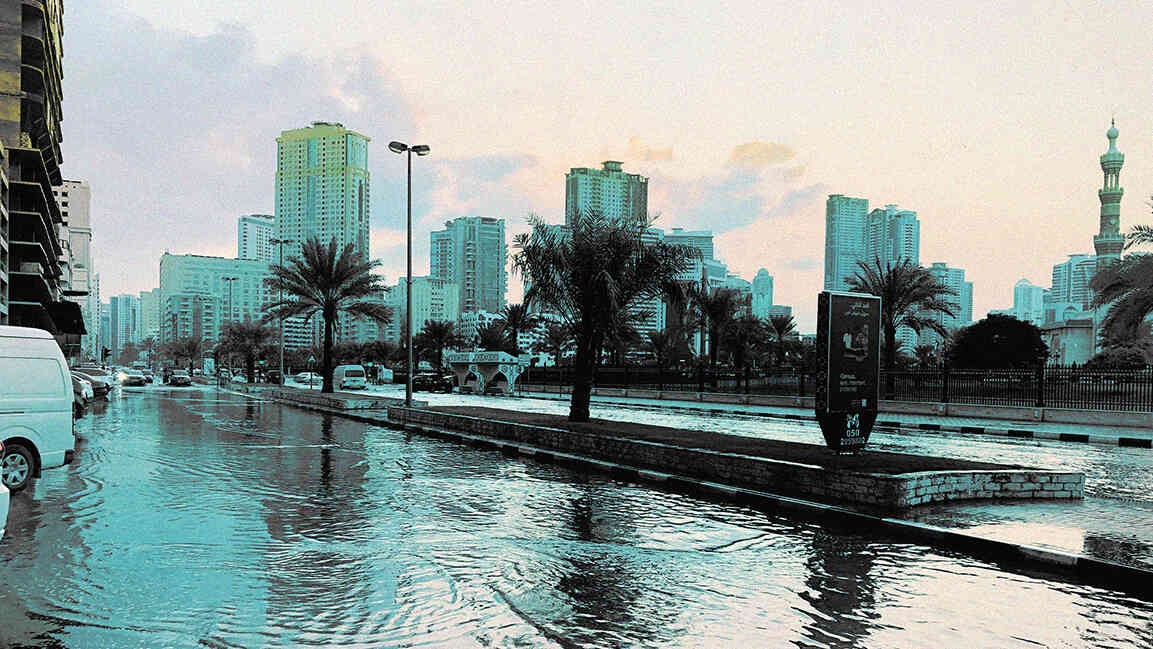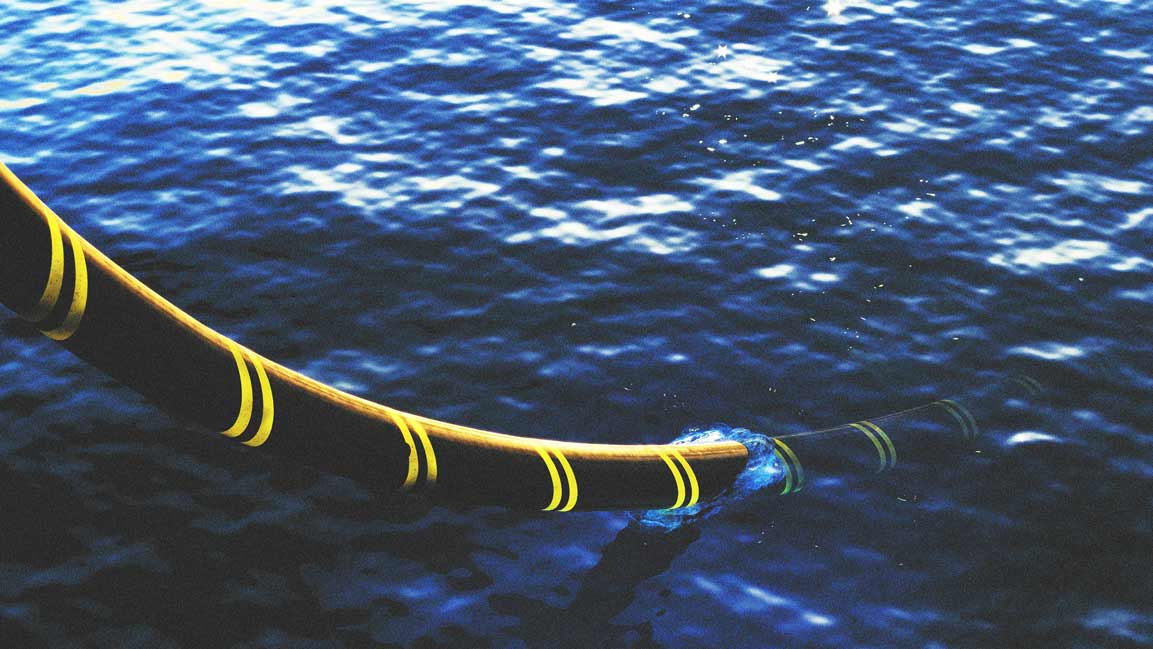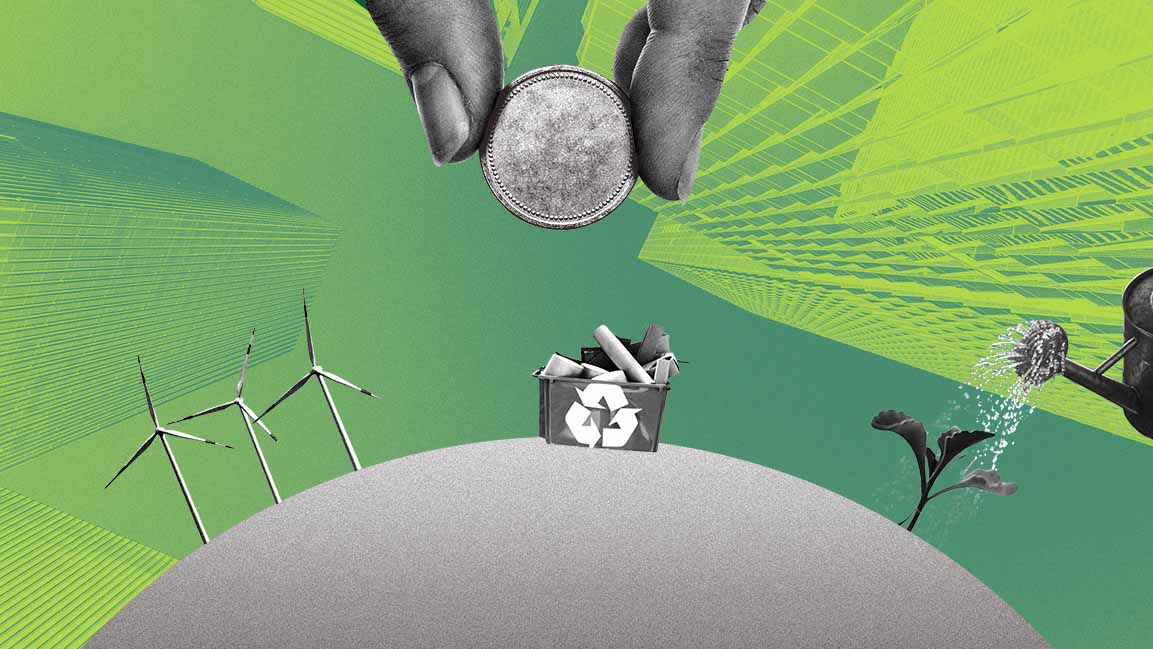- | 9:00 am
What changed in the UAE after the intense floods of 2024?
Since the heavy flooding last April, the UAE has recalibrated and made major changes to its infrastructure and policies.

When the rain wouldn’t stop, Grace tried to stay hopeful. Her bookstore, Bookend, nestled in Dubai Silicon Oasis Digital Park, had weathered seasonal showers before, but this was different. By midday, water had pooled outside the glass front. Within hours, children’s books, rare out-of-print novels, and personal notes slipped between pages were all soaked beyond saving.
“I watched years of love and labor float away,” Grace recalled. “There was no time to protect anything. No one imagined the Digital Park would flood. But it did, and it was devastating.”
Grace was just one of the thousands affected by the record-breaking torrential rain in the UAE in April 2024. The unprecedented flooding closed airports, immobilized major roadways, and highlighted the country’s rising vulnerability to catastrophic weather in an age of climate change.
While the storm affected daily life in all emirates, it also forced the nation to face a harsh reality: urban infrastructure was not designed to withstand this level of climate stress.
A SHIFT IN POLICY AND MINDSET
Recognizing the need for future-proof infrastructure, the UAE launched an $8.2 billion drainage project to expand rainwater drainage capacity by 700%. Specialized committees were formed to assess vulnerabilities and redesign systems with weather resilience in mind. Updated building codes and urban planning guidelines are now being drafted to better withstand extreme weather.
“This storm was a wake-up call—not just for developers, but for the entire built environment supply chain,” says Grace Gergi of SARA Group, a Specification Manager who works closely with urban planning and construction teams. “We’re now seeing a sharp increase in demand for flood-resilient materials, updated specs for sub-structure waterproofing, and smarter drainage integration into design stage planning. These changes aren’t temporary fixes—they’re the new baseline.”
This shift reflects policy evolution and a broader transformation in how cities are imagined and built in the UAE. Collaboration between the government and private sector developers is being formalized, ensuring that residential communities, often the hardest hit, are redesigned to become resilient.
According to Dr. Adam Fenech, climate change expert and Provost at Canadian University Dubai, the UAE’s National Center for Meteorology (NCM) plays a vital role through real-time weather forecasting and early warning systems. With its network of advanced weather stations, Doppler radars, and cloud-seeding aircraft, the NCM supports timely storm response and rainfall enhancement. National strategies like the Climate Change Plan 2017–2050 and the Adaptation Program complement this by embedding climate resilience across key sectors and development goals.
A SIGN OF THINGS TO COME
“The UAE is now experiencing increasingly erratic and intense rainfall, often occurring over short periods and triggering flash floods,” says Dr. Fenech. “These shifts are linked to elevated atmospheric moisture and altered jet stream patterns driven by global warming.”
While the precise frequency of such events remains challenging to predict, Dr. Fenech warns that rising global temperatures and regional climate shifts suggest a growing likelihood of severe rainfall episodes. This underscores the urgent need to strengthen urban infrastructure and emergency preparedness across the UAE.
INTEGRATING AI INTO URBAN FLOOD PLANNING
“In the UAE, extensive natural plains increase the country’s vulnerability to flooding,” says Dr. Maryam Rashed, Assistant Professor of Civil and Environmental Engineering at Khalifa University. “By integrating AI technologies with geospatial data, it becomes possible to accurately identify high-risk areas by analyzing water accumulation patterns and storm forecasts. These insights are crucial in supporting strategic urban planning, preventing the obstruction of natural waterways, and guiding targeted enhancements to drainage infrastructure.”
This forward-looking approach has been increasingly adopted since the unprecedented 2024 storm, which exposed critical gaps in the nation’s flood management systems. In response, municipalities across the UAE have accelerated investments in smart drainage systems, particularly in flood-prone zones like Sharjah and Dubai.
Dubai Municipality, for instance, has expanded its implementation of real-time monitoring networks to track water levels and activated machine learning models to predict flooding hotspots. Abu Dhabi has also announced the integration of AI-driven urban design tools into new city masterplans, ensuring better water flow and natural drainage preservation.
These measures reflect a broader national shift toward climate-resilient infrastructure, where data and technology play central roles in mitigating future risks.
NATURAL INFRASTRUCTURE FOR URBAN FLOOD PROTECTION
While engineering solutions remain vital, experts say there’s a powerful but often overlooked tool in the climate resilience toolkit: the land itself.
In arid environments like the UAE, flood resilience begins with restoring the land.
According to Erin Grover, a sustainability and climate impact expert, regenerating soil and developing grasslands on the outskirts of cities can significantly reduce stormwater runoff before it enters urban areas.
She points to holistic land management: This strategy, which has seen success in the semi-arid regions of southern Africa, not only reduces flood risk but also cools surrounding areas and improves long-term water retention. “Holistic grazing practices have successfully restored degraded land, increased water retention, and buffered communities against extreme weather,” Erin adds.
FROM REACTION TO READINESS
As the UAE adapts to the realities of climate change, it may emerge as a model for other countries facing similar challenges. Dr. Adam rightly points out that the UAE is laying the groundwork for a climate-resilient future by utilizing infrastructure, innovation, policy, and teamwork to effectively manage the growing difficulties brought on by a changing climate.
It may define its leadership in a region where climate change is no longer a distant threat, but a daily consideration.







































